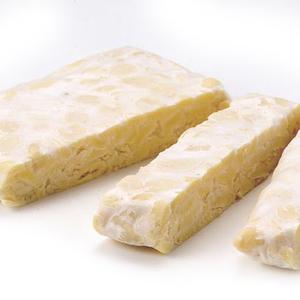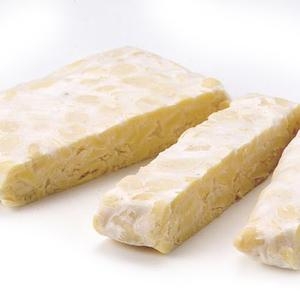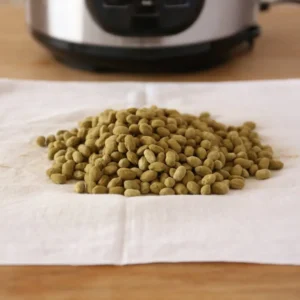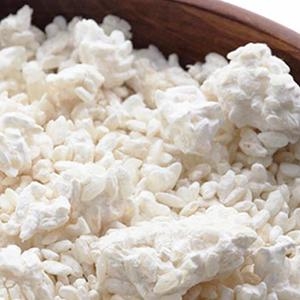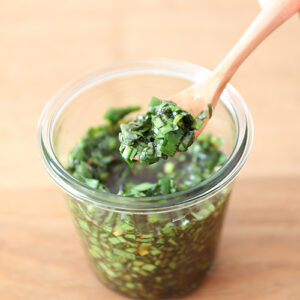This recipe is a summary by Kawashima The Japanstore under the advice of the fermented food manufacturer.
We want you to see it as an example of how to make homemade tempeh. Please enjoy making homemade tempeh with your own preference in the most suitable atmosphere for you.
The recipe will be revised if there is an update. So please let us know if there are better methods and tools that will be useful.
Let’s make a delicious tempeh from this recipe!
What is Tempeh
Tempeh is a fermented soybean product that native to Central Java Province, Indonesia.
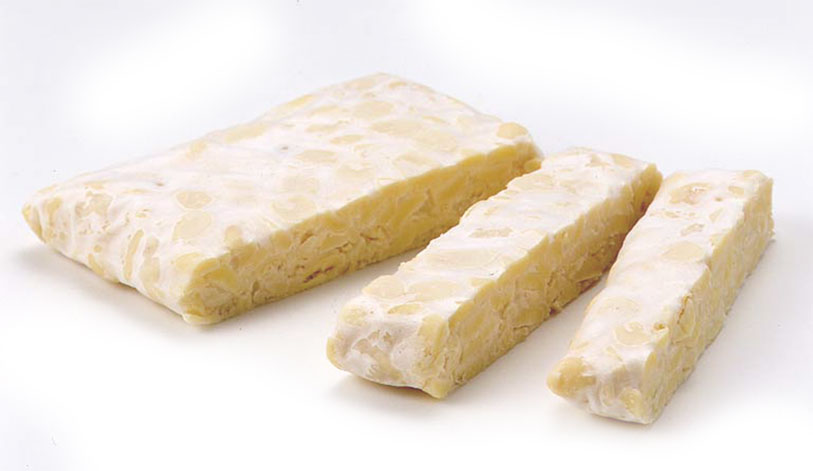
Like tofu, tempeh is made from soybeans. But tempeh is made by using whole soybeans, so it has the complete or even greater nutrients from the soybean.
We all know that tempeh is using plastic to wrap it. But some tempeh in Indonesia is using banana leaves to wrap the tempeh. Tempeh using banana leaves is said to be more tasteful because the leaves are transferring a good aroma to the tempeh. With a note that the leaves used must be clean and fresh leaves.
But the plastic-wrapped tempeh is still delicious and more hygienic for most people. Plastic is also easy to find and cheaper compared to banana leaves. So it is also recommended to wrap it using plastic wrap such as zip lock, etc.
Tempeh as The Healthy & Delicious Fermented Soybeans
Because of its delicious taste and abundant nutrients, now tempeh is known worldwide.
The nutrients contained in tempeh are proteins, minerals, vitamin B, glucose (energy), etc. Sometimes it is said that the amount of protein contained in soybeans is almost balanced with meat. Therefore, you can complete your daily nutrient intake by consuming tempeh.
Tempeh contains lots of protein from plants, so tempeh is also loved by the vegan. In fact, vegans worldwide are already using tempeh as the meat’s replacement.
This protein-rich, easy to cook, and delicious tempeh will surely make your daily consumption more healthy and colorful!

Materials to Make Homemade Tempeh
Materials
- ・ Soybeans (200 grams to 1000 grams *choose your own appropriate amount)
- ・ Tempeh starter (1 gram to 10 grams)
- ・ White Vinegar (100 ml againts 200 grams of soybeans)
More Convenient if you Have
- ・ Warmers such as fermentators device
- ・ Ziplock Plastic
- ・ Plastic Bag
- ・ Toothpick
We are Using These Ingredients:
How to Make Homemade Tempeh
1. Rinse The Soybeans
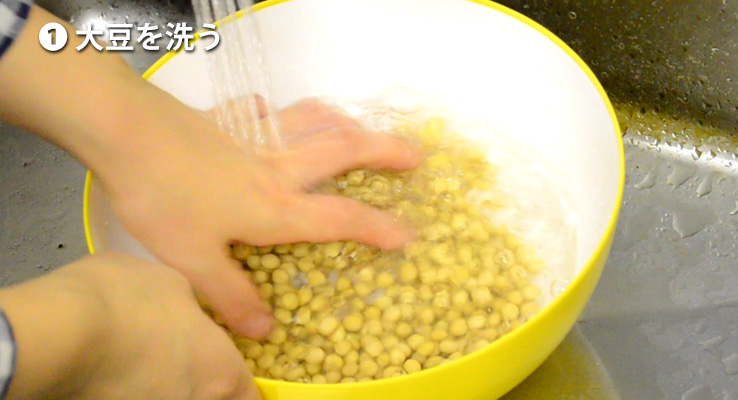
Put all the soybean into a bowl. Rinse the beans well without breaking the skin. The dirt on the skin contains a lot of bacteria that would make it difficult to make good tempeh.
Let’s rinse it well and remove all the dirt.
2. Soak The Beans Into Water with White Vinegar
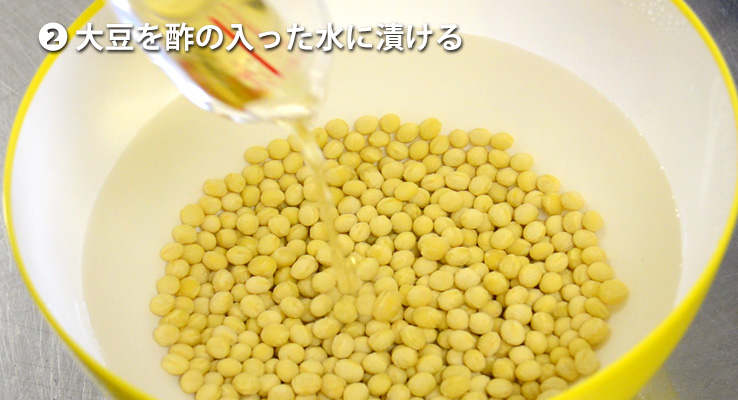
Soak the soybeans with water about 4 times the soybean weight (for example, 2 liters of water if you’re using 500 grams of soybeans). The dry soybeans will absorb water and weights about 2.2 times heavier and the volume becomes more than 2.6 times its original volume.
When the water temperature reaches 20℃ or more, microorganism will grow in immersion water. To prevent the increase of microorganisms, let’s put the white vinegar to the water.
Put about 50 ml againts every 1 litre of water. So if you are using 2 litres of water, please put about 100 ml of white vinegar.
The immersion time:
・25 hours in winter ………………………… Water temperature about 0-5℃
・15 hours in Spring/Autumn ……………… Water temperature 10-15℃
・6 hours in Summer (standard time) …… Water temperature 20-25℃
3. Peel Off The Soybean’s Skin
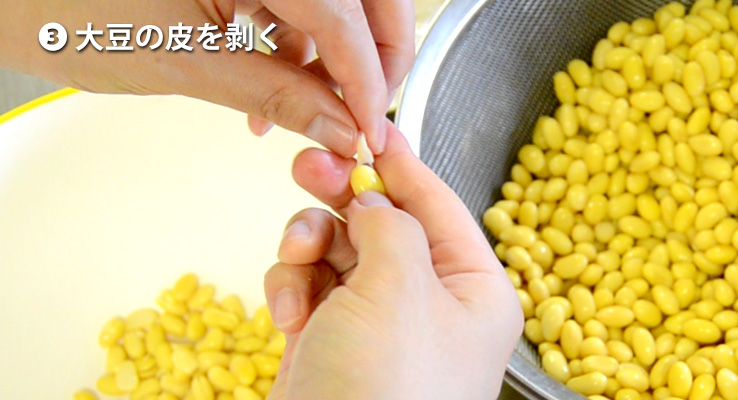
If there is a thin skin from the soybean, there is a high possibility that the fermentation process will not work well. So let’s peel all the soybean’s skin.
Rub the beans gently and peel off the skin.
This process takes roughly about an hour.
4. Simmer The Beans
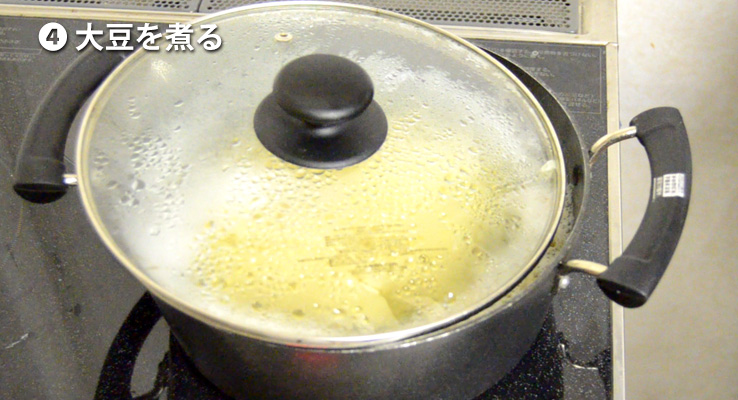
Put the peeled soybeans into a pot, add the desired water and vinegar (1 litre of water with 50 ml vinegar, or 2 litres of water with 100 ml vinegar). Boil the beans with low heat for about 30 minutes to 60 minutes.
The perfect condition after boiling is the beans will still hard (difficult to crush) even if it is squeezed with your finger. This process is only to make the beans cooked, but not over cooked.
5. Drain The Beans
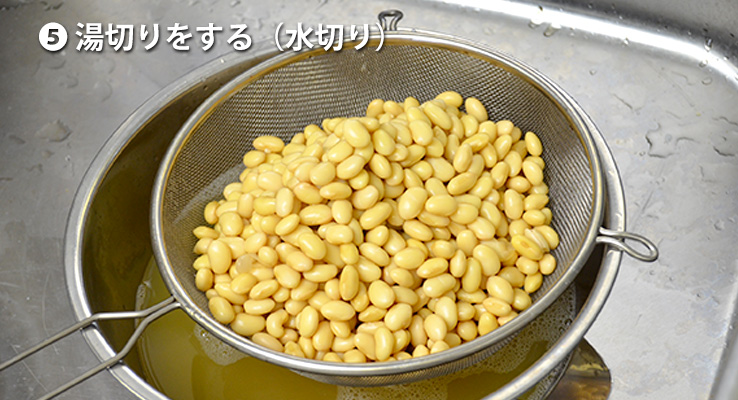
Put the simmered soybeans into a drainer and let it cool down. Shake the drainer slowly to fasten the cooling process. Let the temperature drops until it reaches about 40℃.
Let’s drain all the water thoroughly. It will help the fermentation process works well.
6. Put The Tempeh Starter to The Soybeans
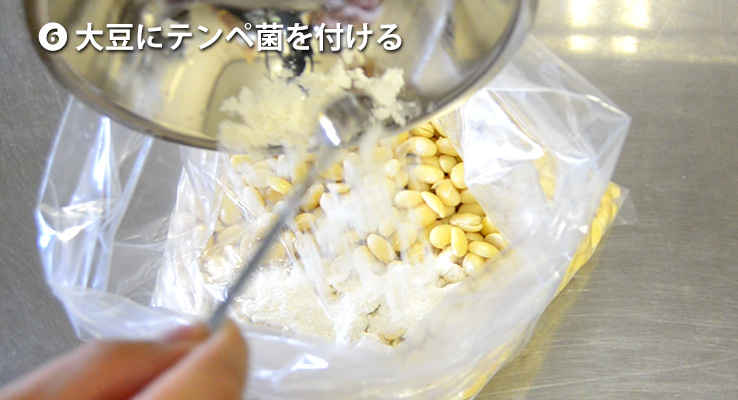
Add 1-10 grams of tempeh starter per 200 grams of cooked soybeans.
Because it is difficult to mix the tempeh starter evenly to every bean, add some flour (can be chestnut powder, parched flour, rice flour) in advance to the tempeh starter. For example, if you put 1 gram of tempeh starter, please add 10 grams of flour into it. Mix the tempeh starter mixture.
Put the cooled soybeans into a big plastic bag and add the tempeh starter mixture, shake the bag well so the tempeh starter will spread evenly.
7. Move it To Ziplock Bag
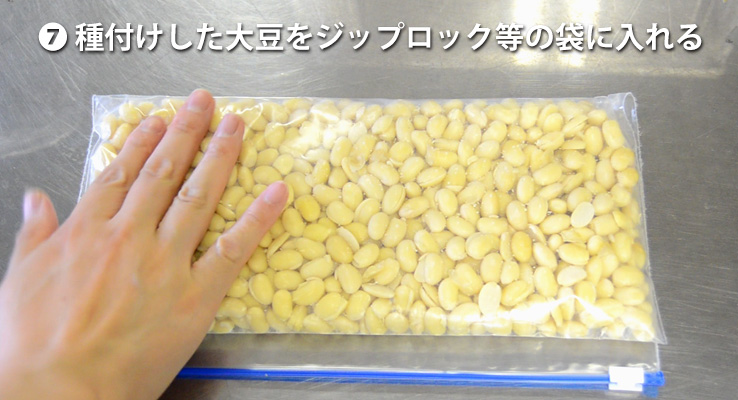
Opened some small hole in the bag with toothpick for air ventilation beforehand
Tempeh starters will produce carbon dioxide during the fermentation process. So these air holes are necessary to let the carbon dioxide escape and take some oxygen in. Make the hole at in every 3 cm square.
After finishing making air holes, put the soybeans soaked with tempeh starter in the bag. Lightly press the bag to make it even.
If you are using a bag such as a ziplock, you can put the finished tempeh later in the refrigerator to preserve it.
8. The Fermentation Process
Let the soybeans soaked with tempeh starter fermented for about 20-24 hours or until there are many white mycelium covering the soybeans. The most suitable temperature for fermentation is about 32℃. It is useful to have a warm incubator such as fermentor device.

Normally, the white mycelium will be visible in about 16 hours. The white mycelium will cover the surface of soybean and make a solid block shape. The tempeh will be complete with it is solidifies.
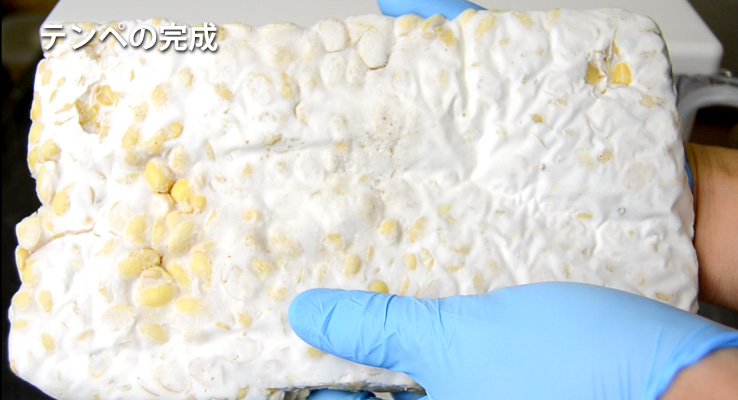
How to Store Tempeh
After the fermentation process is finished, you can store the finished tempeh in the refrigerator for another 48 hours. The refrigerator will stop the fermentation process and prevent the tempeh from decaying at a certain time. If you continue to store it at room temperature, you must cook it maximumly in the next 24 hours.
We don’t recommend storing tempeh in the freezer as it will reduce the original tempeh taste.
Please keep in mind that tempeh has a short preservation period. Therefore, it is best to consume tempeh as soon as the fermentation is finished.
Making Homemade Tempeh’s Q & A
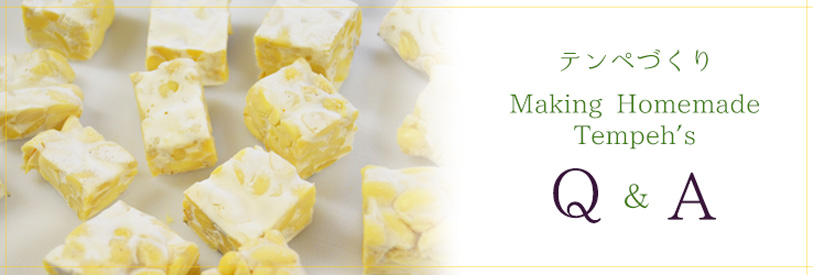
- Is it okay to put too much tempeh starter to the soybeans?
- There’s no problem to put a little bit more tempeh starter.
The amount of the tempeh starter needed for 1 kg cooked soybeans (500 grams dried soybeans) is 1 gram tempeh starter. However, it is difficult to make the fixed amount of tempeh starter for each soybeans. So it would be better if you increase the flour, not the tempeh starter. (mix 9 grams of flour to 1 gram of tempeh starter)
- I left the tempeh at room temperature, and the color becomes darker (brown to blackish).
- Please be sure to save the finished tempeh in the refrigerator for long-term preservation (max 48 hours after the completion of the fermentation process).
The Rhizopus spp. in the tempeh starter will still be alive even after the completion of the fermentation process. So if you leave it at room temperature, the fermentation process will continue and later it can change the color of the tempeh into brown to blackish color.
You may still eat it if the tempeh doesn’t have an odd smell or taste. However, after the continuation of the fermentation process, the taste will drop. An astringent taste also tends to come out. So let’s not eat it when it has some strong odor that resembles the odor of strong ammonia or alcohol.
- Can I still make it without pulling off the soybean’s skin?
- Hyphae are harder to grow in the unpeeled soybeans. If you make tempeh with unpeeled soybeans, the fermentation process won’t go well. Producing tempeh that is fragile if you touch it even only with little force (the beans and skin are easy to tear apart). Therefore, it is not recommended to leave the beans unpeeled if you want to make a good tempeh.
- The tempeh smells like natto, it also has threads as we found in natto. Is it okay?
- There is a possibility that there is contamination from the natto bacillus at the fermentation process.
Natto bacillus is not only in the natto starter powder, but it can also be in our environments such as soil and the atmosphere where it is possible for natto bacillus to grow. We need to clean up the working environment and working tools, make them sterile before beginning making tempeh. Please do not touch or eat natto in the middle of the tempeh making. You also need to wash your hands and make them clean during the tempeh making. These actions will prevent contamination from the natto bacillus entering the tempeh.
- The tempeh is too soft. It could stick in teeth making it become a toothache.
- When boiling the beans, be sure to check the softness condition of soybeans with your fingers.
If the tempeh is too soft, it can be because it is boiled too long. If you boil it too much, the peculiar texture of tempeh will disappear. The normal tempeh has a little bit firm texture from the soybeans. Let’s make sure that you boil it in low heat for about 30-60 minutes. The ideal condition for the boiled soybeans are soft, but still not easy to break if you squeezed it with hands.
Recommended Recipes for Tempeh
Tempeh is tasty when it is fried, or when added to another dishes. In Indonesia, tempeh become one of their everyday food. At least Indonesian people is eating tempeh once a week.
Although there are many tasty recipes using tempeh, we are going to tell you two of our most favorite recipes using tempeh: Tempeh Mendoan (Deep Fried Tempeh with Batter) and Tempeh Bacem. One is fried and another is boiled, then fried (optional).
The first recipe has a savory taste, and another one is the mixed taste between savory and sweet.
These recipes are original recipes from Indonesia and are still used up until now as their treasured local food. Kawashima The Japanstore summarized the recommended recipes from Indonesian people who eat tempeh in daily consumption.
Without further ado, let’s get to the recipe!

Tempeh Mendoan (Deep Fried Tempeh with Batter)
Ingredients
- 200 g Tempeh
- Oil for deep frying
Batter Ingredients
- 100 g Wheat flour
- 25 g Tapioca starch
- ¼ tsp Salt
- 1 tsp Coriander Powder
- 1½ Cloves Garlic (grounded)
- 1 Stem Leek (sliced)
- 130 ml Water
Instructions
- Cut the tempeh into thin slices (Usually can be cut to 8 slices, but you can cut it with our own thickness preference).
- Combine all the batter ingredients in a mixing bowl, make sure that all the ingredients mixed together without any lumps. Don’t add too much water, so the batter is a bit thick like a pancake mixture.
- Heat the oil in frying pan in medium to high heat.
- Once the oil is heated enough, dip each slice of tempeh to the batter and deep fry until the color becomes gold brown-ish color.
- Lift tempeh from the frying pan and drain the oil in oil strainer.
- Arrange the tempeh mendoan on a serving plate and serve immediately when it is still hot.
Notes

Tempeh Bacem
Ingredients
- 400 g Tempeh
- 45 g Palm sugar
- 4 Cloves Red onion (chopped)
- 2 Cloves Garlic (chopped)
- ½ tsp Turmeric powder
- 1 tsp Coriander powder
- 5 tsbp Sweet soy sauce(Kecap in Indonesian)
- 4 leaves Bay leaves
- 2 tsp Salt
- 2 L Water
Instructions
- Cut the tempeh into 1-1.5 cm thickness. Next, chop the red onion and garlic finely.
- Place all the ingredients at once in a pot and bring to a boil in medium heat.
- Stir slowly and do it periodically to prevent burn. Make sure that the ingredients are not wrecked when you do the stir.
- The boiling time is around 1 hour or until all the water dissolves.
- Turn off the heat and take the tempeh from the pot. You can serve it immediately by deep fried it or preserved it in refrigerator for future consumption. It can last up to 4 days in refrigerator.
Notes
Recommended Product for Homemade Tempeh

